
Mixed Knowledge Quiz
Difficulty : Medium Get 6/10 correct to pass the quiz
Question 1 of 10
Which element has the chemical symbol Ba?
Question 2 of 10
What are the tiny drops of water that condense on cold objects near the ground called?
Advertisement
Question 3 of 10
At which prestigious college did Tony Blair study law?
Question 4 of 10
What is classified by the A B O system?
Question 5 of 10
Which cereal grain is the most commonly used in beer?
Question 6 of 10
What are trees that retain some or all of their foliage throughout the year?
Question 7 of 10
Sleeping sickness is caused by the bite of which insect?
Advertisement
Question 8 of 10
Arthur E Kennelly and Harold P Brown invented which widely used method of execution?
Question 9 of 10
In "The Cat in the Hat", what kind of hat does the cat wear?
Question 10 of 10
What is the "Patella"?
Advertisement

MORE QUIZZES
Spelling Quiz for adults
Which word is spelled correctly?
Which word is spelled correctly?

General Trivia Quiz
10 questions
10 questions

Movie Quiz for fans
10 actionpacked questions
10 actionpacked questions

General Trivia IQ challenge
Is your IQ high enough for these questions?
Is your IQ high enough for these questions?

England Quiz
What do you know about England?
What do you know about England?

Food & Cooking Trivia Qu
10 home chef questions
10 home chef questions

History Quiz
10 mixed questions
10 mixed questions

History Quiz (10 questions)
Let me know your score in the comments
Let me know your score in the comments

General Knowledge Quiz
10 mixed category questions
10 mixed category questions

Trivia Quiz (10 mixed questi
How many correct will you get?
How many correct will you get?

Idioms Quiz
Which idiom fit the description?
Which idiom fit the description?

Movie quiz for movie fans
10 hot questions
10 hot questions

Advertisement
Trivia quiz for A+ students
10 quite hard questions
10 quite hard questions
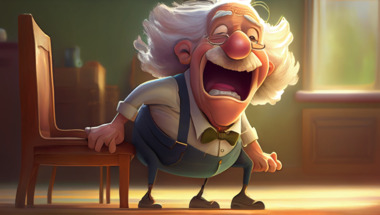
Quiz : Cars people used to d
10 questions to test your knowledge
10 questions to test your knowledge

World Geography Quiz
10 questions to test your knowledge
10 questions to test your knowledge

Music Quiz
How high can you score?
How high can you score?

Song Quiz : "Who sang this s
We have lined 10 songs up for you in this fun..
We have lined 10 songs up for you in this fun..

Trivia Challenge
Saturday 2nd June 2018
Saturday 2nd June 2018

Mixed trivia quiz
10 general knowledge questions
10 general knowledge questions
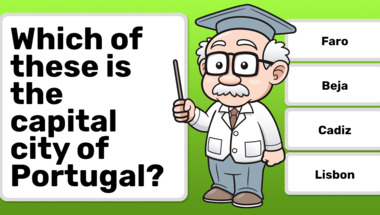
Here are ten trivia question
What is your expectation for your performance..
What is your expectation for your performance..

10 questions about food
How many correct will you get?
How many correct will you get?

Food & Cooking Quiz
10 home chef questions
10 home chef questions

Mixed General Trivia Quiz
10 fun questions
10 fun questions

General Knowledge Quiz (10 q
Are you up for a quiz?
Are you up for a quiz?

Advertisement
History Quiz (Medium Difficu
Are you ready? :)
Are you ready? :)

General trivia quiz
10 questions
10 questions

The trivia quiz everyone fai
How many correct will you get?
How many correct will you get?

A trivia quiz that you canno
10 mixed questions
10 mixed questions

A quiz consisting of miscell
Test your knowledge with these 10 questions.
Test your knowledge with these 10 questions.

General trivia quiz
10 questions to test your knowledge
10 questions to test your knowledge

Music Quiz
How many correct will you get?
How many correct will you get?

Mixed trivia quiz for smart
10 mixed questions
10 mixed questions

1960s Hits Lyrics Quiz
How's your trivia brain doing?
How's your trivia brain doing?

1970s Bands Quiz
How many correct will you get?
How many correct will you get?

World History Quiz
Let's test your trivia skills!
Let's test your trivia skills!

Quiz : Songs of the 1950s
10 questions to answer
10 questions to answer

Advertisement
Quiz : Things on TV in the 1
1960s quiz 4 out of 8. Theme day!
1960s quiz 4 out of 8. Theme day!

General Knowledge For Trivia
How many correct will you get?
How many correct will you get?

General Quiz for everyone
10 mixed trivia questions
10 mixed trivia questions

Mixed knowledge questions
10 questions in mixed categories
10 questions in mixed categories

Trivia Smart Quiz
10 Smart Questions
10 Smart Questions

Crazy hard trivia quiz
10 mixed general trivia questions
10 mixed general trivia questions

Cooking Quiz
10 mixed questions for you
10 mixed questions for you

Genius level trivia quiz
How many correct answers will you get?
How many correct answers will you get?

General Knowledge For Trivia
Let us know your score in the comments
Let us know your score in the comments

History quiz for smart peopl
10 history questions
10 history questions

60s Song Lyrics Quiz
10 songs, can you guess them all?
10 songs, can you guess them all?

Trivia quiz for the experien
10 good questions
10 good questions

Advertisement
Medicine Quiz
10 questions
10 questions

Science and nature quiz
10 questions
10 questions

Mixed general trivia quiz
10 fun questions
10 fun questions

General Knowledge Quiz (10 q
Are you up for a quiz?
Are you up for a quiz?

General trivia test
How many correct will you get?
How many correct will you get?
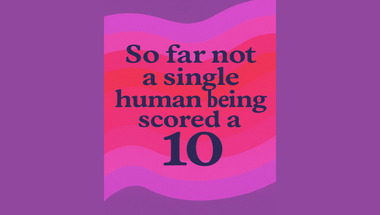
General Knowledge Quiz (10 q
Are you up for a quiz?
Are you up for a quiz?

General Knowledge For Trivia
10 questions to answer
10 questions to answer

Mixed General Trivia Quiz
10 questions lined up
10 questions lined up

General Knowledge Quiz
Can you get them all right?
Can you get them all right?

Trivia Quiz with 10 mixed qu
How many of them will you answer correctly?
How many of them will you answer correctly?

10 knowledge questions
Can you master this quiz?
Can you master this quiz?

General Trivia Quiz
10 questions
10 questions

Advertisement
General trivia quiz
How many of them will you answer correctly?
How many of them will you answer correctly?

Movie Quiz
10 mixed questions
10 mixed questions

10 hard trivia questions
Mixed Knowledge quiz
Mixed Knowledge quiz

Trivia quiz for clever owls
10 questions in different categories
10 questions in different categories

Music Quiz
How high can you score?
How high can you score?

Quiz on general knowledge.
10 mixed questions
10 mixed questions

World Geography Quiz
Let's see how smart you really are!
Let's see how smart you really are!

Movie Quiz
10 questions
10 questions

Quiz : 10 cities changed the
Very few will master this one :)
Very few will master this one :)

Food and cooking quiz
10 fun questions
10 fun questions

Science and nature quiz
10 questions
10 questions

Mixed knowledge questions
What do you know?
What do you know?

Advertisement
General Trivia Quiz
10 mixed up questions
10 mixed up questions

World History Trivia Quiz fo
10 mixed up history questions
10 mixed up history questions

Mixed Trivia Quiz
How will you do in this general knowledge qui..
How will you do in this general knowledge qui..

General Trivia Quiz
10 questions to test your knowledge
10 questions to test your knowledge
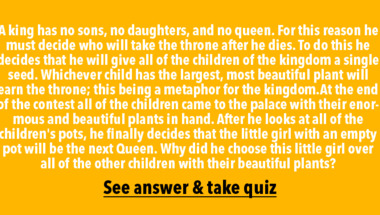
Quiz : Latin Words
Latin is not easy, so expect around 5 out of ..
Latin is not easy, so expect around 5 out of ..

Hard Trivia Quiz
You wont beat this trivia quiz
You wont beat this trivia quiz

Cooking Trivia Quiz
10 mixed questions
10 mixed questions

Music Quiz
How high can you score?
How high can you score?

General Trivia Quiz
How many answer do you know?
How many answer do you know?
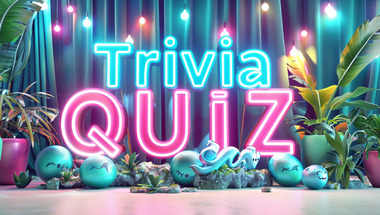
How smart are you?
10 questions trivia quiz
10 questions trivia quiz

Science and nature quiz
10 questions
10 questions

Quiz : Do you know 1950s son
10 questions about the songs of the past
10 questions about the songs of the past

Advertisement
Geography Quiz
10 mixed questions
10 mixed questions

Hard Trivia Quiz
Will you even get 5 questions right?
Will you even get 5 questions right?

Quiz : Television Quotes
Can you remember them all?
Can you remember them all?

Quiz : Women and spare parts
Can you even name 4 of these? :)
Can you even name 4 of these? :)

Quite difficult 10 question
How far can you stretch this quiz?
How far can you stretch this quiz?

General Knowledge For Trivia
How many of them will you answer correctly?
How many of them will you answer correctly?

Movie Quiz
How many correct will you get?
How many correct will you get?

1970s History Quiz
10 questions to test your knowledge
10 questions to test your knowledge

Movie Quiz
10 questions
10 questions

Geography Quiz
10 mixed questions
10 mixed questions

Quiz : Songs of the 1950s
How many correct will you get?
How many correct will you get?

10 questions about food & co
Let us know your final score in the comments ..
Let us know your final score in the comments ..

Advertisement
Quiz : Song Lyrics back in t
Let me know your score in the comments
Let me know your score in the comments

Quiz : 10 fresh trivia quest
How many correct will you get?
How many correct will you get?

Trivia Quiz
10 questions
10 questions

10 mixed general knowledge q
Click here to have fun
Click here to have fun

Movie Quiz
10 questions
10 questions

History Quiz
10 mixed questions
10 mixed questions

Trivia Quiz
Let's see how smart you really are!
Let's see how smart you really are!

Amazing Trivia Quiz
10 hot questions
10 hot questions

History Quiz (1960-1969)
How many of them do you remember?
How many of them do you remember?

Up for a trivia quiz?
10 questions to challenge your brain
10 questions to challenge your brain

Movie Quiz
10 questions
10 questions

Quiz on songs from 1962
Identify the artists of these hits from 1962.
Identify the artists of these hits from 1962.

Advertisement
Movie quiz for the people
10 questions for you to have fun with
10 questions for you to have fun with

1950s Movie Quiz
How many of them will you answer correctly?
How many of them will you answer correctly?

Mixed knowledge questions
10 trivia questions waiting here
10 trivia questions waiting here
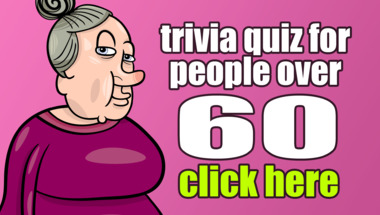
General Trivia Quiz
10 questions
10 questions

1950s History Quiz
10 quite hard questions
10 quite hard questions
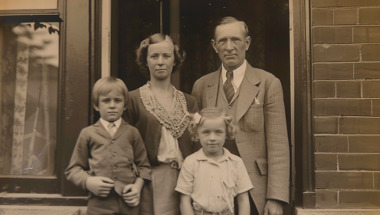
Trivia Quiz
Are you smart enough for this one?
Are you smart enough for this one?

General Trivia Quiz
10 mixed genereal questions
10 mixed genereal questions
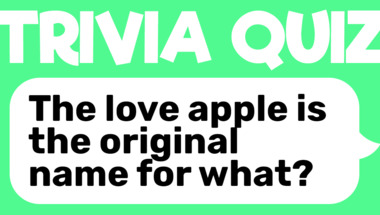
10 questions about the fanta
How many of these 60s songs will you remember..
How many of these 60s songs will you remember..

Food & Cooking Quiz
10 questions
10 questions

Quiz on History
Here are 10 questions pertaining to history.
Here are 10 questions pertaining to history.
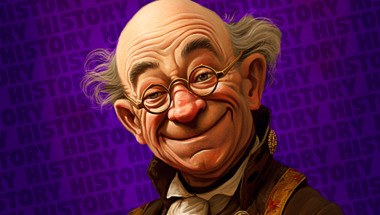
General Knowledge Quiz
10 mixed questions
10 mixed questions

General Knowledge Quiz
Let's see how smart you really are!
Let's see how smart you really are!

Advertisement